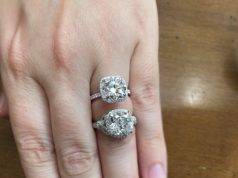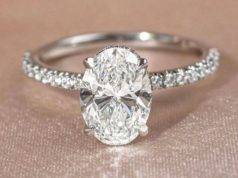The lab grown diamonds nz market has grown rapidly in the past few years. Currently, there are more than a hundred companies that offer these diamonds. But there are a few things to keep in mind before buying these diamonds. Some are worth considering, including the cost, the environmental impact, and the optical characteristics of the diamond.
CVD or HPHT?
It’s not always easy to determine the difference between HPHT and CVD diamonds. The two types have similar appearances and are produced in the same way, but the quality of each differs.
A lab grown diamond is created in a controlled environment, just like natural diamonds. Using these methods, labs can produce large gem-quality diamonds that are not as costly as those made from the earth.
These diamonds are not as rare as naturally mined rough diamonds. But they do have the same qualities, such as clarity and optical properties.
Both methods have their own advantages and disadvantages. While CVD can produce diamonds with minimal to no impurities, HPHT is a more complex process.
In fact, it can be difficult for experts to distinguish between these two methods. Fortunately, recent advances in growth techniques have allowed for precise control of the impurity content.
For this reason, there are two main types of lab-grown diamonds, namely CVD and HPHT. Although both are technically viable, they require specialized equipment and energy. Unlike CVD, HPHT requires higher pressure and more energy.
Optical characteristics of a diamond
Using lab grown diamonds Sydney, you can get the same beautiful sparkle and brilliance as a mined diamond. There are a few differences, however, that cannot be observed with the naked eye. But with the proper equipment, you can distinguish between a laboratory grown diamond and a natural diamond.
Infrared spectroscopy of a diamond can be used to detect certain impurities. This can be helpful in evaluating the color and clarity of a diamond gemstone. Alternatively, you can use the ultraviolet spectroscopy (UV-VIS) to determine a diamond’s transmissivity.
Unlike a natural diamond, a lab grown diamond does not contain nitrogen. This is because nitrogen in a natural diamond is not visible to the naked eye. It is only present in trace amounts.
A lab grown diamond is a crystallized carbon diamond. It is produced in a laboratory setting using advanced technological methods. Lab grown diamonds are not to be confused with cheap simulants. The difference is that simulants are not as hard or as durable as a natural diamond. They are also more prone to chipping and scratching.
Environmental impact
In recent years, the mined diamond industry has been criticized for its environmental impact. It requires large amounts of energy, chemical substances, and water. These pollutants can harm the Earth’s ecology. This has led to a number of attempts to reform the industry.
Lab-grown diamonds are an alternative to natural diamonds. These are created in a laboratory, using carbon atoms. The diamond is formed by layering the carbon atoms in a crystal structure.
While lab-grown diamonds are considered sustainable and ethical, they are not produced in a conventional manner. Traditionally, diamonds are grown in deep mines or caves. This can produce water and air pollution, as well as causing soil erosion.
However, some diamond mining companies have moved towards a more eco-friendly business model. Some have begun using environmentally friendly techniques such as solar energy, wind power, and bio-fuels. Others are working to co-exist with artisanal mining.
Despite these efforts, some experts believe that mined diamonds will still be popular in the coming years. They estimate that the demand for mined diamonds will increase by a factor of five to seven.
Cost
Lab grown diamonds are becoming a popular alternative to mined diamonds. These gems offer a number of benefits, including being a sustainable option. And they’re also more affordable than natural diamonds.
Laboratory grown diamonds are essentially a chemical match to a mined diamond, allowing them to be sold as a direct replacement. They’re also a sustainable option, since they don’t require the use of fossil fuels. Plus, the process of manufacturing them is significantly less energy-intensive than mining them.
Some jewellers are still unclear about the technology behind it. But it’s become easier to make man-made diamonds, and the cost of these products has lowered drastically in recent years.
The price of a lab grown diamond depends on the style and specifications of the gemstone, but it’s usually significantly lower than that of a mined one. That makes them an excellent choice if you’re on a tight budget.
One carat of lab grown diamonds starts at $1,550. This is about half the price of a mined one.











